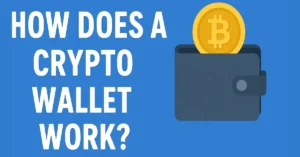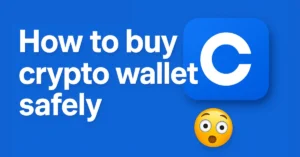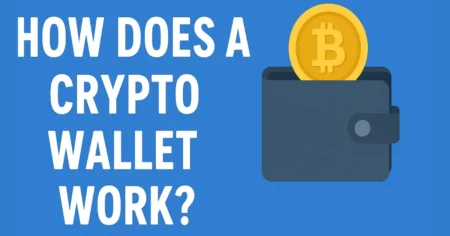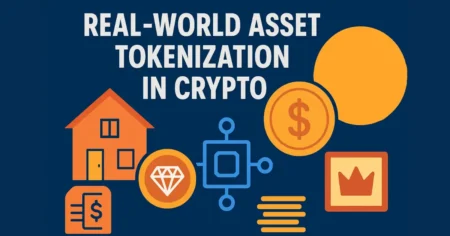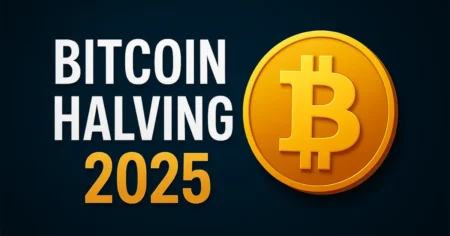Introduction
Have you ever heard the word cryptocurrency and wondered what it really means? You’re not alone. Cryptocurrency has become one of the hottest topics in the world today, but for many people, it still feels confusing and complicated. The truth is, cryptocurrency is simply a form of digital money that works without banks or governments controlling it. It runs on special technology called blockchain, which keeps everything safe, transparent, and trustworthy.
Over the past few years, cryptocurrencies like Bitcoin and Ethereum have grown from being just a new experiment to something millions of people use and invest in. Some see it as the “future of money,” while others look at it as an exciting new way to invest. Whether you’re curious about how it works, thinking about buying your first coin, or just want to understand why everyone is talking about it, this guide will make things clear and easy to follow.
In this article, we’ll break down everything about cryptocurrency in simple terms—what it is, how it works, why it’s important, and even some personal lessons learned along the way. By the end, you’ll have a clear picture of what cryptocurrency is and why it’s such a big deal today.
What is Cryptocurrency?

Cryptocurrency is a type of digital money that exists only online. Unlike the cash in your wallet or the balance in your bank account, it is not printed by governments or controlled by banks. Instead, cryptocurrency is powered by advanced technology called blockchain, which acts like a digital ledger. This ledger records every transaction in a way that is transparent, secure, and very difficult to change.
The term itself is made of two parts: “crypto” comes from cryptography (the science of keeping information safe through codes and encryption), and “currency” means money. So, cryptocurrency is money that is secured using cryptography. This makes it resistant to fraud, hacking, or double-spending.
When you own cryptocurrency, you don’t physically hold coins or notes. What you really have is a digital key that proves you own a certain amount stored on the blockchain. With that key, you can send or receive funds anywhere in the world within seconds—without relying on banks, credit card companies, or payment apps.
Here are a few key things that make cryptocurrency unique:
- Decentralized: No single person, company, or government controls it. Instead, it’s run by a global network of computers.
- Borderless: You can send money to anyone, anywhere, without worrying about exchange rates or bank approval.
- Secure: Transactions are verified by cryptography and recorded on the blockchain permanently.
- Limited Supply: Many cryptocurrencies, like Bitcoin, have a maximum supply. For example, only 21 million Bitcoins will ever exist. This scarcity is one reason why people compare Bitcoin to gold.
- To put it simply: if traditional money is like a book controlled by one librarian (the bank), cryptocurrency is like a giant open book shared across thousands of computers worldwide. Everyone can see the entries, but no one can secretly change the records.
That’s what makes cryptocurrency not just another form of money, but a completely new way to think about money itself.
You may also like it.
What is a crypto wallet, and how does it work? – Coinsify
10 Crypto Terms Every Beginner Must Know: Coinsify
What is blockchain technology? Complete Guide – Coinsify
Why Cryptocurrency is Important
Cryptocurrency isn’t just a trend—it’s a financial revolution that is changing how people think about money, security, and freedom. Its importance lies in the fact that it offers solutions to problems that traditional banking and financial systems haven’t been able to fix. Let’s break it down clearly.
Financial Freedom and Control
- You own your money directly, without relying on banks or governments.
- No one can freeze your account or block your transactions.
- You can send or receive funds anytime, anywhere in the world.
Faster and Cheaper Transactions
- International money transfers with banks often take days and come with high fees.
- With cryptocurrency, payments can happen within minutes or even seconds.
- Transaction costs are much lower compared to traditional methods.
Borderless and Inclusive Finance
- Anyone with an internet connection can access cryptocurrency, even if they don’t have a bank account.
- It helps millions of unbanked people worldwide join the global economy.
- No need for paperwork, approvals, or credit history to get started.
Transparency and Security
- Every transaction is recorded on the blockchain and can’t be altered.
- The system is built on cryptography, making it secure and resistant to fraud.
- You don’t need to trust a single authority—trust comes from the network itself.
Hedge Against Inflation
- Traditional currencies lose value over time due to inflation.
- Many cryptocurrencies, like Bitcoin, have a fixed supply, which makes them more resistant to inflation.
- People often call Bitcoin “digital gold” because of this quality.
Technological Innovation
- Beyond money, blockchain technology powers smart contracts, decentralized apps (dApps), and NFTs.
- Industries like supply chain, healthcare, real estate, and gaming are exploring crypto solutions.
- It opens doors to a more transparent and efficient digital future.
Investment Opportunities
- Cryptocurrencies have shown high growth potential, attracting investors worldwide.
- While risky, they also offer the chance for significant returns.
- New financial products like staking and yield farming give users more ways to earn.
Step-by-Step Guide – What Is Cryptocurrency?

Step 1: Define the concept
- Cryptocurrency is digital money secured by cryptography.
- It runs on public networks, not issued by a central bank.
- Units are tracked on a shared ledger called a blockchain.
Step 2: Understand the blockchain
- A blockchain is a chronological chain of blocks containing transactions.
- Every node keeps a copy, so records are hard to alter.
- Transparency: anyone can verify transactions on-chain.
Step 3: See how consensus works
- Networks agree on the “true” ledger via rules called consensus.
- Common models: Proof-of-Work (miners compete with computing power) and Proof-of-Stake (validators stake coins to secure the chain).
- Incentives align honest behavior with rewards.
Step 4: Learn keys and addresses
- You control funds with a private key. Keep it secret.
- The private key generates a public key and an address.
- Whoever holds the private key controls the coins at that address.
Step 5: Follow a transaction
- You sign a transaction with your private key.
- The network broadcasts it for validation and inclusion in a block.
- After confirmations, the transfer is final.
Step 6: Compare types of crypto
- Bitcoin (BTC): Scarce store of value and payments.
- Smart-contract platforms (ETH): Run programmable apps.
- Stablecoins (USDT, USDC): Aim to track fiat value.
- Altcoins/tokens: Specialized assets for specific use cases.
Step 7: Note core properties
- Decentralized: No single point of control.
- Borderless: Works across countries and banks.
- Censorship-resistant: Hard to block valid transactions.
- Programmable: Code enforces rules automatically.
Step 8: Map real-world uses
- Peer-to-peer payments and remittances.
- Savings in scarce digital assets.
- DeFi: lending, trading, and yield via smart contracts.
- NFTs and digital ownership.
- Micropayments and machine-to-machine transfers.
Step 9: Acknowledge risks
- High price volatility.
- Irreversible transactions and key loss.
- Phishing, scams, and smart-contract bugs.
- Changing regulations and tax duties.
Step 10: Choose a wallet
- Custodial: A company holds keys; easy but trust required.
- Non-custodial: You hold keys; more control, more responsibility.
- For larger sums use a hardware wallet. Back up the seed phrase offline.
Step 11: Select a network and fees
- Each coin runs on a network with its own fee market.
- Pick the correct chain when sending (BTC vs ETH).
- Use small test sends to avoid costly mistakes.
Step 12: Acquire your first crypto
- Centralized exchanges: buy with fiat after identity checks.
- Decentralized exchanges: swap tokens from a wallet.
- Understand spot vs. derivatives. Beginners should avoid leverage.
Step 13: Secure your setup
- Enable 2FA on accounts.
- Store seed phrases on paper or metal, never in screenshots or cloud notes.
- Verify URLs and contract addresses. Beware of airdrop bait.
Step 14: Track and manage
- Use a portfolio tracker or your wallet’s analytics.
- Record cost basis and timestamps for taxes.
- Rebalance with a plan, not emotion.
Step 15: Practice safe transacting
- Double-check addresses and networks before sending.
- Confirm expected fees and slippage.
- Wait for sufficient confirmations for large transfers.
Step 16: Keep learning
- Read official docs and reputable audits.
- Start small, scale with knowledge.
- Review assumptions as markets and rules evolve.
Advantages and Disadvantages of Cryptocurrency
Cryptocurrency comes with both strong advantages and serious drawbacks. Understanding both sides helps you make smarter decisions if you’re thinking about using or investing in it.
Advantages of Cryptocurrency
| Decentralization No single government, bank, or company controls most cryptocurrencies. This reduces the risk of censorship or political influence. Power is spread across a global network of computers. |
| Fast and Low-Cost Transactions Sending money across borders can take days and cost high fees with banks. With crypto, transfers can take seconds or minutes at much lower costs. Ideal for international remittances and small online payments. |
| Accessibility and Financial Inclusion Anyone with internet access can use cryptocurrency. Millions of people in developing countries without banks can join the digital economy. No paperwork, approvals, or bank accounts required. |
| Security and Transparency Transactions are protected by advanced cryptography. Records on the blockchain are permanent and visible to anyone. This reduces fraud and makes tampering nearly impossible. |
| Potential for High Returns Many investors have seen significant profits from cryptocurrencies like Bitcoin and Ethereum. The market is young and volatile, which creates opportunities for growth. Early adopters can benefit from long-term value increases. |
| Innovation Beyond Money Blockchain technology powers smart contracts, NFTs, and DeFi apps. Industries such as healthcare, real estate, and gaming are adopting crypto solutions. This innovation creates new possibilities for digital ownership and business models. |
Disadvantages of Cryptocurrency
| Volatility Prices can rise or fall dramatically within hours or days. This makes crypto risky as an investment and unreliable as a stable currency. Many beginners lose money by entering at the wrong time. |
| Lack of Regulation Crypto markets are still lightly regulated compared to banks. This attracts scams, fraud, and unreliable projects. Users have little legal protection if something goes wrong. |
| Security Risks If you lose your private key, you lose access to your funds permanently. Hackers target exchanges, wallets, and inexperienced users. Phishing scams and fake projects are common. |
| Limited Acceptance Despite growth, most businesses still do not accept cryptocurrency directly. Converting crypto to traditional money often requires centralized exchanges. This reduces everyday usability. |
| Environmental Concerns Proof-of-Work cryptocurrencies like Bitcoin consume large amounts of electricity. This raises questions about sustainability and climate impact. Newer models like Proof-of-Stake aim to solve this issue, but adoption takes time. |
| Complexity for Beginners Concepts like blockchain, private keys, and wallets can feel overwhelming. Mistakes—like sending crypto to the wrong address—are irreversible. Education and caution are essential for safe use. |
You may also like it.
How to Buy Crypto Safely in 2025: Complete Guide – Coinsify
Bitcoin vs Ethereum: Key Differences Explained: Complete Guide
Ultimate Blockchain Glossary: Learn Blockchain Terms Easily
Frequently Asked Questions (FAQs) About Cryptocurrency
Is cryptocurrency safe to use?
Yes and no. Cryptocurrency itself is built on secure blockchain technology, which is very hard to hack. However, the way you store and use it matters. If you lose your private keys or fall for scams, you can lose your money permanently. Using trusted wallets, exchanges, and security practices like two-factor authentication makes it safer.
Can I buy things with cryptocurrency?
Yes, but not everywhere. Some businesses accept Bitcoin, Ethereum, or other cryptocurrencies for payments, especially online stores. You can also use crypto debit cards that convert your coins into regular money when you pay. However, most local shops and big companies still rely on traditional money.
How do I get my first cryptocurrency?
The easiest way is through a cryptocurrency exchange like Coinbase, Binance, or Kraken. You create an account, deposit regular money (like dollars or euros), and buy coins such as Bitcoin or Ethereum. Make sure to transfer your coins to a secure wallet instead of leaving them on the exchange for long periods.
What’s the difference between Bitcoin and Ethereum?
Bitcoin is mainly seen as “digital gold.” It’s used as a store of value and for peer-to-peer payments.
Ethereum is more than money—it’s a platform that runs smart contracts and decentralized apps (dApps). That’s why many new crypto projects are built on Ethereum.
Can cryptocurrency replace traditional money?
Probably not completely, at least not soon. Cryptocurrencies are powerful and growing fast, but governments and banks still play a big role in the financial system. Instead of replacing money, crypto is more likely to work alongside it—offering new choices for payments, investments, and digital ownership.
Why do cryptocurrency prices change so much?
Because the market is young and driven by supply and demand. News events, government regulations, big investors, and public interest can cause prices to rise or fall quickly. That’s why cryptocurrency is considered risky—it can bring big profits but also big losses.
Do I need a lot of money to start investing in crypto?
No. You can start small. Most exchanges allow you to buy even a fraction of a coin. For example, you don’t need to buy a whole Bitcoin (worth thousands of dollars); you can buy just $10 worth if you want.
What happens if I lose my wallet password or private key?
Unfortunately, you lose access to your cryptocurrency forever. There’s no customer support to reset your password like in banks. That’s why it’s very important to back up your wallet’s seed phrase (a set of secret words) and store it safely offline.
Conclusion
Cryptocurrency is more than just a buzzword—it’s a new way of thinking about money. It gives people control over their finances, allows fast global payments, and opens doors to exciting technologies like smart contracts and NFTs. At the same time, it comes with risks like volatility, scams, and complex learning curves.
If you’re curious about crypto, start small, learn the basics, and focus on safety. Whether it becomes the future of money or simply an alternative system, cryptocurrency has already changed the financial world in ways we can’t ignore.
Bonus Points About Cryptocurrency
Here are some extra insights that can give you a deeper understanding of cryptocurrency:
You Don’t Need to Buy a Whole Coin
- Many beginners think they must buy one full Bitcoin, but that’s not true.
- Cryptocurrencies are divisible. For example, Bitcoin can be divided into satoshis (1 BTC = 100,000,000 satoshis).
- This means you can start with just a few dollars.
Transactions Are Permanent
- Once you send cryptocurrency, it cannot be undone.
- If you send money to the wrong wallet address, there is no way to reverse it.
- Always double-check the address before confirming a transaction.
Not All Cryptocurrencies Are the Same
- Bitcoin is designed as digital money.
- Ethereum focuses on running decentralized applications.
- Stablecoins are built to hold steady value, often tied to the dollar.
- Each has different purposes and strengths.
Crypto Can Be Used Without Internet Banking
- Unlike banks, crypto doesn’t require approval, paperwork, or a credit history.
- Anyone with a smartphone and internet connection can participate.
- This makes it especially valuable in countries with limited banking access.
Many Governments Are Exploring Digital Currencies
- Central Bank Digital Currencies (CBDCs) are government-backed digital versions of money.
- These are not the same as cryptocurrencies, but they’re inspired by the same technology.
- Countries like China, India, and the EU are already testing CBDCs.
Education is the Key to Success
- Most crypto losses happen because of lack of knowledge.
- Scams, hacks, and poor security habits are avoidable with the right learning.
- Understanding wallets, keys, and basic blockchain principles is the best protection.
You may also like it.
How to Buy Bitcoin Safely (Complete Beginner’s Guide)
Top 10 Crypto Wallets for Beginners (2025 Edition)
Best Crypto Wallet Security Tips – Protecting Your Digital Assets
